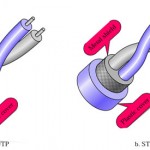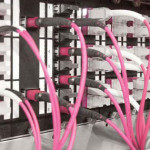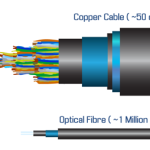The TIA TR-42.1.1 group was tasked with the development of the “Telecommunications Infrastructure Standard for Internet Data Centers.” “The scope of the working group included topology and performance for copper and fiber cabling, and other aspects of the IT infrastructure that will enable these facilities to rapidly deploy new technologies. Although the standard was published prior to the requirements for 10GBASE T, the design practices are solid for new technologies. The TIA/EIA has recently adopted TIA/EIA-942 ‘The Telecommunications Infrastructure Standard for Data Centers’. The requirements will consider the need for flexibility, scalability, reliability and space management.” (Source www.tiaonline.org). The National Electric Code (NEC) in Article 645 “Information Technology Equipment” and the National Fire Protection Association (NFPA) in NFPA-75 “The Standard for the Protection of Information Technology” have addressed these important factors. While these standards will provide guidelines, there are specific design elements that will vary with each data center and its housed equipment. General considerations that will apply to all data centers include:
- Standards based open systems
- High performance and high bandwidth with growth factors incorporated
- Support for storage devices (i.e. Fibre channel, SCSI or NAS)
- Support for convergence with growth factors incorporated
- High quality, reliability and scalability
- Redundancy
- High capacity and density
- Flexibility and expandability with easy access for moves, adds and changes
- BAS, voice, video, CCTV and other low voltage systems
- Incorporation of Data Center security and monitoring systems
Cabling may be copper (UTP, F/UTP, S/FTP) or fiber (SM/MM) which will depend on the interface of the equipment to which it is to connect. In many cases a combination of several media types will be used. It is in an end user’s best interest to run cabling accommodating growth during the first cabling implementation. Pricing can be negotiated on a project basis saving money. Also moves, adds and changes can be costly and increase the risk of bringing down critical components that are in use. Typical practices allow for dark fiber (unused strands) to be run along with the active fiber. Equipment may be active or passive.








